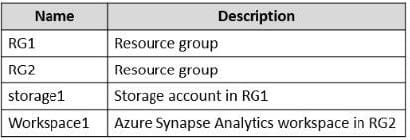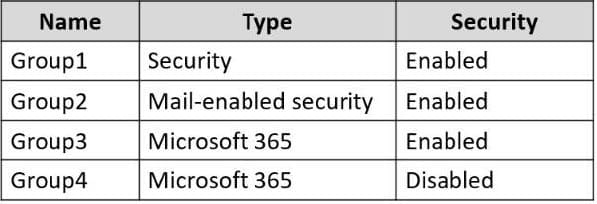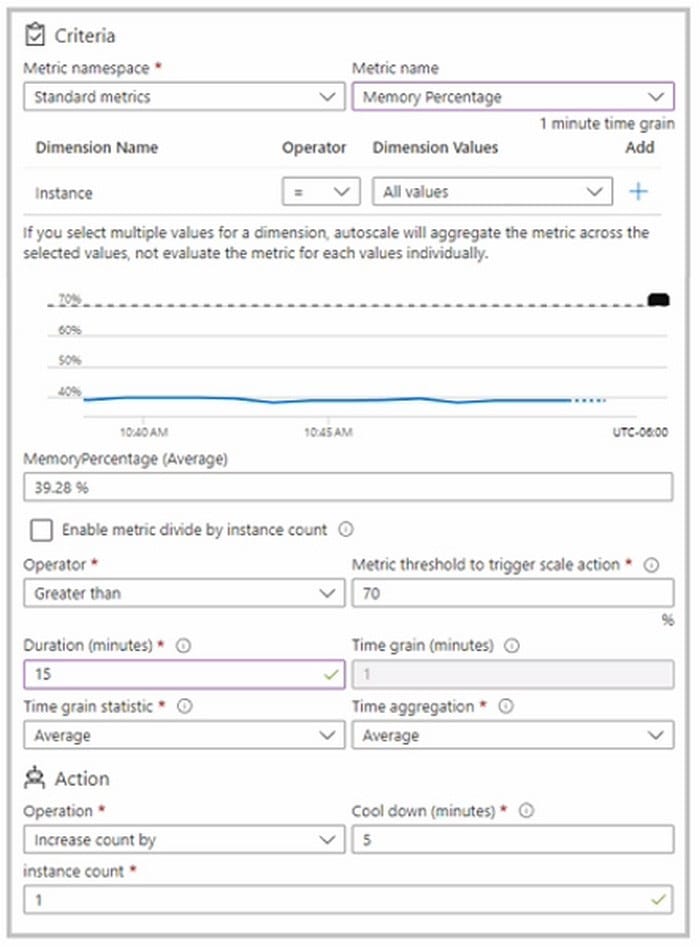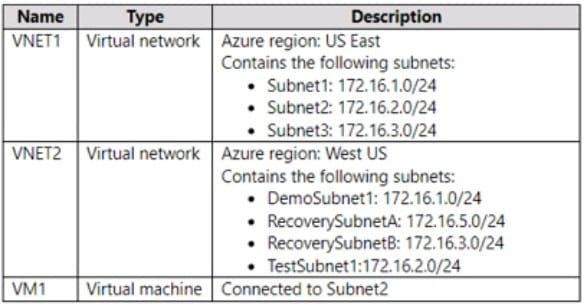Exam Details
Exam Code
:AZ-104Exam Name
:Microsoft Azure AdministratorCertification
:Microsoft CertificationsVendor
:MicrosoftTotal Questions
:361 Q&AsLast Updated
:Mar 23, 2025
Microsoft Microsoft Certifications AZ-104 Questions & Answers
-
Question 661:
You have an Azure subscription that contains a Recovery Services vault named Vault1.
You need to enable multi-user authorization (MAU) for Vault1.
Which resource should you create first?
A. an administrative unit
B. a managed identity
C. a resource guard
D. a custom Azure role
-
Question 662:
You have 15 Azure subscriptions.
You have an Azure Active Directory (Azure AD) tenant that contains a security group named Group1.
You plan to purchase additional Azure subscription.
You need to ensure that Group1 can manage role assignments for the existing subscriptions and the planned
subscriptions.
The solution must meet the following requirements:
1.
Use the principle of least privilege.
2.
Minimize administrative effort. What should you do?
A. Assign Group1 the Owner role for the root management group.
B. Assign Group1 the User Access Administrator role for the root management group.
C. Create a new management group and assign Group1 the User Access Administrator role for the group.
D. Create a new management group and assign Group1 the Owner role for the group.
-
Question 663:
You have an Azure subscription that contains the resources shown in the following table.

You need to assign Workspace1 a role to allow read, write, and delete operations for the data stored in the containers of storage1. Which role should you assign?
A. Storage Account Contributor
B. Contributor
C. Storage Blob Data Contributor
D. Reader and Data Access
-
Question 664:
You have an Azure AD tenant that contains the groups shown in the following table.

You purchase Azure Active Directory Premium P2 licenses. To which groups can you assign a license?
A. Group1 only
B. Group1 and Group3 only
C. Group3 and Group4 only
D. Group1, Group2, and Group3 only
E. Group1, Group2, Group3, and Group4
-
Question 665:
You have an Azure subscription that contains a storage account named account1.
You plan to upload the disk files of a virtual machine to account1 from your on-premises network. The on-premises network uses a public IP address space of 131.107.1.0/24.
You plan to use the disk files to provision an Azure virtual machine named VM1. VM1 will be attached to a virtual network named VNet1. VNet1 uses an IP address space of 192.168.0.0/24.
You need to configure account1 to meet the following requirements:
1.
Ensure that you can upload the disk files to account1.
2.
Ensure that you can attach the disks to VM1.
3.
Prevent all other access to account1.
Which two actions should you perform? Each correct answer presents part of the solution.
NOTE: Each correct selection is worth one point.
A. From the Networking blade of account1, select Selected networks.
B. From the Networking blade of account1, select Allow trusted Microsoft services to access this storage account.
C. From the Networking blade of account1, add the 131.107.1.0/24 IP address range.
D. From the Networking blade of account1, add VNet1.
E. From the Service endpoints blade of VNet1, add a service endpoint.
-
Question 666:
You have an Azure App Service app named App1 that contains two running instances. You have an autoscale rule configured as shown in the following exhibit.

For the Instance limits scale condition setting, you set Maximum to 5.
During a 30-minute period, App1 uses 80 percent of the available memory.
What is the maximum number of instances for App1 during the 30-minute period?
A. 2
B. 3
C. 4
D. 5
-
Question 667:
You have an Azure AD tenant named contoso.com.
You have an Azure subscription that contains an Azure App Service web app named App1 and an Azure key vault named KV1. KV1 contains a wildcard certificate for contoso.com.
You have a user named [email protected] that is assigned the Owner role for App1 and KV1.
You need to configure App1 to use the wildcard certificate of KV1.
What should you do first?
A. Create an access policy for KV1 and assign the Microsoft Azure App Service principal to the policy.
B. Assign a managed user identity to App1.
C. Configure KV1 to use the role-based access control (RBAC) authorization system.
D. Create an access policy for KV1 and assign the policy to User1.
-
Question 668:
You have an on-premises network that contains a database server named dbserver1.
You have an Azure subscription.
You plan to deploy three Azure virtual machines. Each virtual machine will be deployed to a separate availability zone.
You need to configure an Azure VPN gateway for a site-to-site VPN. The solution must ensure that the virtual machines can connect to dbserver1.
Which type of public IP address SKU and assignment should you use for the gateway?
A. a basic SKU and a static IP address assignment
B. a standard SKU and a static IP address assignment
C. a basic SKU and a dynamic IP address assignment
-
Question 669:
You have an on-premises datacenter and an Azure subscription.
You plan to connect the datacenter to Azure by using ExpressRoute.
You need to deploy an ExpressRoute gateway. The solution must meet the following requirements:
1.
Support up to 10 Gbps of traffic.
2.
Support availability zones.
3.
Support FastPath.
4.
Minimize costs.
Which SKU should you deploy?
A. ERGw1AZ
B. ERGw2
C. ErGw3
D. ErGw3AZ
-
Question 670:
You have an Azure subscription that contains the resources shown in the following table.

You configure Azure Site Recovery to replicate VM1 between the US East and West US regions.
You perform a test failover of VM1 and specify VNET2 as the target virtual network.
When the test version of VM1 is created, to which subnet will the virtual machine be connected?
A. TestSubnet1
B. DemoSubnet1
C. RecoverySubnetA
D. RecoverySubnetB
Related Exams:
62-193
Technology Literacy for Educators70-243
Administering and Deploying System Center 2012 Configuration Manager70-355
Universal Windows Platform – App Data, Services, and Coding Patterns77-420
Excel 201377-427
Excel 2013 Expert Part One77-725
Word 2016 Core Document Creation, Collaboration and Communication77-726
Word 2016 Expert Creating Documents for Effective Communication77-727
Excel 2016 Core Data Analysis, Manipulation, and Presentation77-728
Excel 2016 Expert: Interpreting Data for Insights77-731
Outlook 2016 Core Communication, Collaboration and Email Skills
Tips on How to Prepare for the Exams
Nowadays, the certification exams become more and more important and required by more and more enterprises when applying for a job. But how to prepare for the exam effectively? How to prepare for the exam in a short time with less efforts? How to get a ideal result and how to find the most reliable resources? Here on Vcedump.com, you will find all the answers. Vcedump.com provide not only Microsoft exam questions, answers and explanations but also complete assistance on your exam preparation and certification application. If you are confused on your AZ-104 exam preparations and Microsoft certification application, do not hesitate to visit our Vcedump.com to find your solutions here.